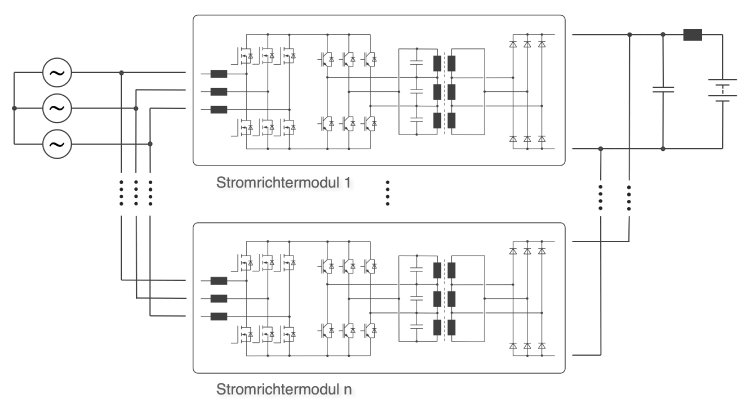Researchers at the Heilbronn University of Applied Sciences have now developed a process with which quick-charging devices that are designed for high power can be manufactured automatically, and therefore more cost-effectively and in larger quantities. Especially well-suited for this is the process developed by Prof. Dr.-Ing. Michael Kokes, the 3-phase direct resonant charging system, for all fast chargers with very high power, such as the ones required for charging trucks or buses.
Ever-higher power is also required for quick-charge stations for trucks since these vehicles should charge quickly and the charging device must deliver a lot of power in a short time. Previously, these charging stations with power ratings of more than 100 KW were manufactured with line-side transformers or a power converter with a DC link and converter. The costs for the winding materials and capacitors required make manufacturing very expensive, however.
The switching concept developed by Prof. Kokes works with a converter circuit without a line-side transformer and a procedure for generating a potential-isolated DC voltage, which requires almost no capacitors. This makes manufacturing of charging devices in the range up to several 100 KW much cheaper.
The switching concept also provides for a modular design. On the one hand, this means that these charging devices can be manufactured automatically. On the other hand, their modular structure offers a great variety of possible combinations. The individual modules can be used to address a wide range of services and models. Due to switching operations of the resonant converter for potential isolation in the de-energized phases of the DC link, there are no switching losses here. The output voltage is regulated by the line-side converter. Frequency multiplications in the input and output circuits significantly reduce the filtering effort, which in turn significantly reduces costs.
This procedure is especially suitable for quick-charging stations for large vehicles such as trucks and buses. But even automobile charging stations that have to provide a lot of power quickly could be manufactured more cost-effectively with this process.
The patent applications (DE 102021208278 A1/ WO2023/006949A1) are pending. Technologie-Lizenz-Büro (TLB) GmbH supports Heilbronn University of Applied Sciences and its scientists in patenting and marketing its current innovation. TLB has been commissioned with the exploitation of this pioneering technology and offers engine manufacturers possibilities to cooperate and license the patents.
For more detailed information, please contact Innovation Manager Emmerich Somlo (somlo@tlb.de)

